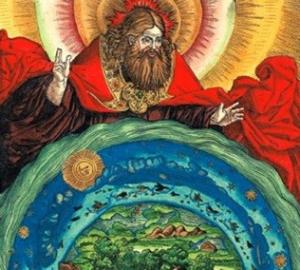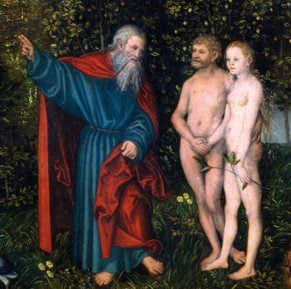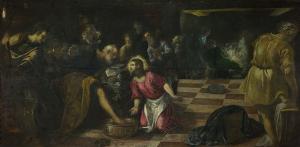 The next segment of the conversation between Heidi Lene Maibom and N. T. Wright raises a question worth a little consideration. Still engaged with the question “What is wrong with the world?”, Prof. Maibom reacts to Wright’s suggestion that God is at work putting it right. In the discussion she gives a common description of the Christian view of God. The video embedded below starts about 56 minutes into the conversation with Prof. Maibom’s response.
The next segment of the conversation between Heidi Lene Maibom and N. T. Wright raises a question worth a little consideration. Still engaged with the question “What is wrong with the world?”, Prof. Maibom reacts to Wright’s suggestion that God is at work putting it right. In the discussion she gives a common description of the Christian view of God. The video embedded below starts about 56 minutes into the conversation with Prof. Maibom’s response.
I guess I simply don’t see what meaning positing some kind of … paternalistic figure much like a father who has created the world is going to give the world. I don’t see it. That doesn’t make it any more meaningful to me that somehow we’re supposed to reflect his glory or whatever the story is. That, to me, gives no more meaning than not having it. Why would God be there? Why would there be a supernatural creature that looks so suspiciously like your dad, and where’s your mom anyway, where’s she gone? There is something about that whole story that to me …, in so far as I find religious or spiritual idea attractive, I’m much more on the mystical side or the gnostic side even. You know god is within you and the devil or the bad is within you. It is not something external, it is not some kind of external existence some kind of male figure or anything like that. I find the whole question of supernatural beings kind of puzzling. I think once we start thinking harder and harder about it, we might go with, you know who Maimonides is, Guide to the Perplexed, Jewish philosopher? He would ask questions like: It says in the Bible God turns his back. What sense does that make? Does God have a back? So there’s lots of questions where it seems to me that the way we’ve conceived religion is a reflection of the limitations of our ways of thinking.
The relevant portion of the video below runs about 6 minutes.
 Wright responds by first noting that the view of God as father isn’t taken quite this literally by many Christians, although some certainly have this image and understanding. The portrayal of God in Christian art, like the image to the right from a work by Lucas Cranach the Elder, reinforces the understanding put forth by Maibom. The portrayal of God by Michelangelo in his creation images in the Sistine Chapel give a similar impression as does the front-piece to Luther’s Bible at the top of the post. We have to work for a better understanding.
Wright responds by first noting that the view of God as father isn’t taken quite this literally by many Christians, although some certainly have this image and understanding. The portrayal of God in Christian art, like the image to the right from a work by Lucas Cranach the Elder, reinforces the understanding put forth by Maibom. The portrayal of God by Michelangelo in his creation images in the Sistine Chapel give a similar impression as does the front-piece to Luther’s Bible at the top of the post. We have to work for a better understanding.
Wright goes on:
But this is why in the New Testament it says again and again that actually God is a puzzle. We don’t know exactly who God is until we look at Jesus. And sooner or later all these questions come back to Jesus. Now there’s a problem about that as well, because particularly in some Christian circles there’s a sort of sense that whatever the question is Jesus is going to be the answer to it. So you stick up you hand and say Jesus and you’ll probably be right in Sunday School. But the New Testament is saying something much more subtle than that. That Jesus is actually an extremely interesting human being, if I can put it like that without seeming myself to be patronizing. But that as you look at Jesus, the New Testament is saying um, yea, God has been a bit of a puzzle. And sometimes he seems to be absent and sometimes maybe it’s just a voice inside your head and you’re not sure. But, when you see Jesus, then you start to get a fresh idea of who God might be.
… So for me it isn’t the postulation of a supernatural being. It is the deep awareness that many humans have across cultures that human life has a dimension to it which you can’t put into either a test tube or a bank balance, and which catches up with you, either when you fall in love, or when you hear a wonderful piece of music, or whatever. … And that into that, there comes the ancient Israelite story, and from the ancient Israelite story about a God who made heaven and earth to work together.
You see, the natural – supernatural distinction is not one that resonates well with the Bible. I think that’s a modern way of trying to say something which is in the Bible, but actually distorting it. In the Bible it isn’t supernature and nature. It’s creation which is multifaceted and in which strange things happen and God seems to show up. Or some people think he’s shown up. Then the story about Jesus kind of brings all that into focus.
 Tom Wright has this knack for compacting many ideas in a very short space. As Christians when we think of God, the incarnation in Jesus should be first and foremost. God isn’t well represented by our human intuitions, attributing creature attributes to the creator. To speak of him as heavenly father is appropriate – but to envision an elderly man with human characteristics is not. This is far more like the ancient pagan view of God than the Jewish or Christian understanding of God. God is a puzzle, but our understanding becomes somewhat clearer as we ponder the ancient Israelite story brought to a climax in the birth, life, death, and resurrection of Jesus.
Tom Wright has this knack for compacting many ideas in a very short space. As Christians when we think of God, the incarnation in Jesus should be first and foremost. God isn’t well represented by our human intuitions, attributing creature attributes to the creator. To speak of him as heavenly father is appropriate – but to envision an elderly man with human characteristics is not. This is far more like the ancient pagan view of God than the Jewish or Christian understanding of God. God is a puzzle, but our understanding becomes somewhat clearer as we ponder the ancient Israelite story brought to a climax in the birth, life, death, and resurrection of Jesus.
The other significant misunderstanding in the world today is this divide between natural and supernatural. This isn’t the right way to think about the world or about God. Creation is multifaceted and God is at work in the world though processes we describe as natural as well as, on occasion, in more direct ways that make a break with the so-called natural approach.
What does it mean to say that we see God through Jesus?
How is creation multifaceted.
Are supernatural and natural biblical concepts?
If you wish to contact me directly you may do so at rjs4mail [at] att.net.
If interested you can subscribe to a full text feed of my posts at Musings on Science and Theology.











